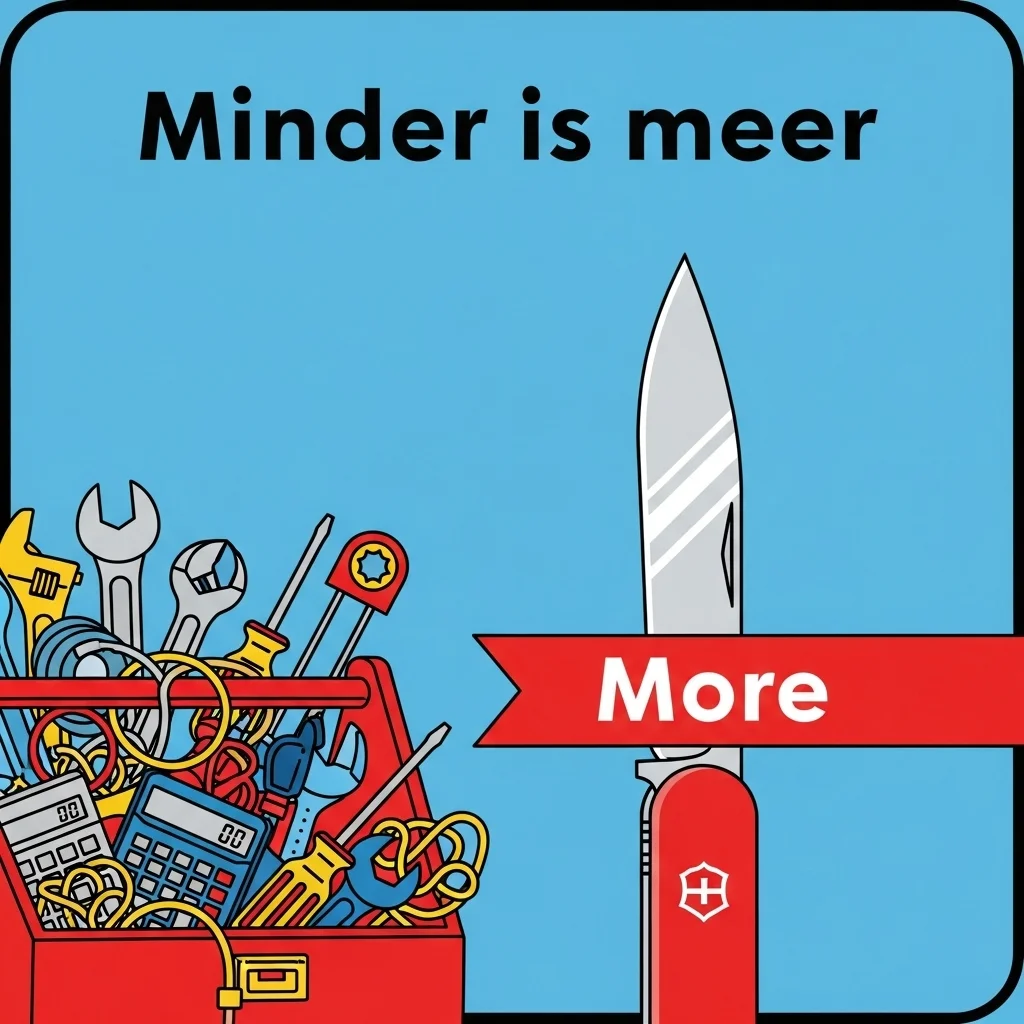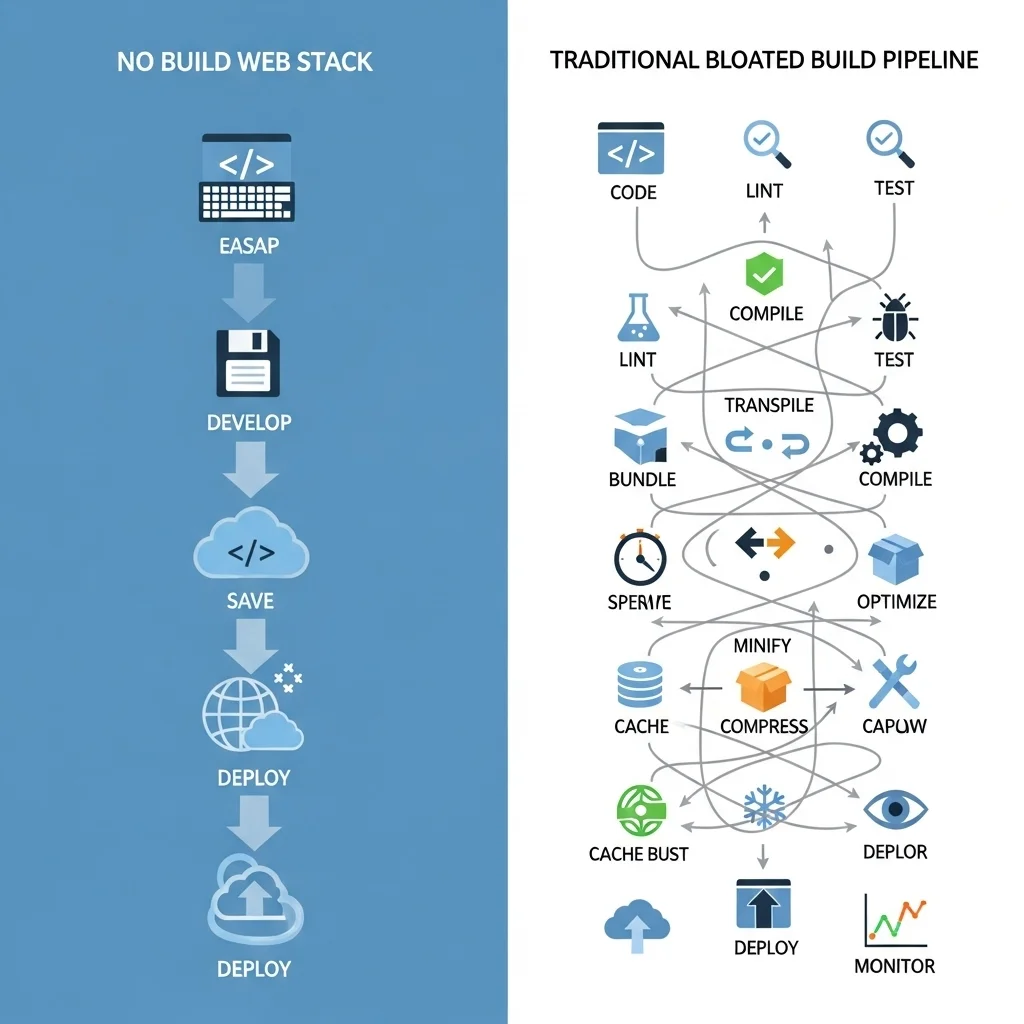Subtitle: In a world full of JavaScript tooling, serverless buzzwords and endless cookie banners, it is tempting to keep adding extra layers of complexity.
Why simplicity really scales
Subtitle: In a world full of JavaScript tooling, serverless buzzwords and endless cookie banners, it is tempting to keep adding extra layers of complexity. Yet time and again we find that the biggest impact happens when we dare to return to clear, understandable solutions. In this blog I share how we at Spartner translate that simplicity into scalable Laravel solutions—and what you can learn from it. 🚀
Complexity drains focus
Less is more
Small choices, big impact
Fast feedback In 90's style, push code and refresh the page straight away? That feeling of instant feedback keeps energy and creativity high. With Laravel Sail or Valet you can recreate that flow locally within minutes.
Sane defaults Let the framework do the heavy lifting. Laravel Forge or Ploi handle deployments, leaving us to focus on business logic instead of endless YAML carousels.
Coherent team Small, multi-disciplinary teams understand the full stack. No 'front-end glob pipeline configurator', but T-shaped developers who grasp each other's pull requests.
Own hardware Cloud is handy, but not sacred. Dedicated servers cut cost and latency, and you rediscover how the internet really works.
Back to developer happiness
Why do we sometimes feel like 'CRUD monkeys'?
I recently caught myself driving a simple feature through four containers, two message queues and a build pipeline that took twenty minutes. 🤦♂️ The result? Less time for real problem-solving and more time waiting around.
What strikes me in practice is that many teams believe modern equals complex. But look at the success of solo makers like Pieter Levels: a handful of PHP files, SQLite, yet millions of page views. The lesson? Fast feedback beats architecture-porn every time.
Pro-tip:
Use Laravel's Hot Reload via Vite and Livewire. You see the result within two seconds—no webpack trauma required.
Simple ≠ primitive
Rails 8 'No Build' and Laravel mix-less
DHH's announcement of 'No Build' in Rails 8 made me smile. No node_modules, no npm run build—yet modern JS. In Laravel-land I see the same trend: Vite, esbuild and even fully mix-less setups. The result:
"Our experience shows that a pull request without a package-lock diff is reviewed 30 % faster."
Handy trick
Serve ES modules directly using import-maps or Laravel's vite-manifest. The browser does the parsing, you keep the joy of development.
Business value of small teams
Why managers are sometimes redundant
From our experience a team of up to five devs delivers the same output as a team of fifteen, simply because communication overhead grows cubically.
Pitfall: hero developers
A small team does not mean one hero with four sidekicks. Alternate pair programming, share knowledge weekly and make sure no-one spends more than two weeks on the same user story.
Opportunity: domain expertise
When the same people gather requirements, write code and deploy, deep product knowledge emerges. This speeds up decision-making and reduces bugs.
Define the minimum viable stack
What do you really need to ship feature X?
Cutting hurts, but every dependency removed saves hours later.
Automate repetition
Measure load time and development cycle
Review every six months
Dare to take ownership
My key insight
Simplicity takes courage
We are conditioned to celebrate complexity: more microservices, more SaaS, more buzz. But the latest trend shows that going back to simple, predictable tools is actually the turbo for innovation.
Key takeaways:
Fast feedback fuels creativity and quality
Minimalist stacks are cheaper and easier to understand
Small teams win on focus and domain knowledge
Modern browsers often make build steps redundant
Action points:
Scrap one unnecessary tool today
Measure your build and deploy time and set concrete goals
Plan a 'simplicity sprint' with your team
Curious what your project looks like with a minimal yet powerful stack? Share your challenge in the comments or drop me a message. Let’s strip away the complexity and get back to building with joy! 🎉
Do I have to ditch all bundlers now?
From our experience: not necessarily. If you have heavyweight React SPAs, a bundler still adds value. But for 80 % of B2B apps you can easily go without. 🙂
Is dedicated hardware not old-fashioned?
No. Modern bare-metal providers deliver API-driven, on-demand servers. We run Kubernetes nodes and classic Forge servers in the same data centre—low latency, fixed price.
How do I avoid spaghetti code without microservices?
Domain-driven design. Service classes in Laravel, clear bounded contexts and regular refactor sessions keep monoliths supple.
Can a junior do this too?
Absolutely. A simple stack lowers the entry cost. Our latest junior committed production code in week one. 🚀
What about security without hiding behind countless services?
Simple means auditable. Fewer moving parts = smaller attack surface. Use Laravel's built-in security features, run automatic OS patches and schedule OWASP scans.
How do I combine Livewire with no-build?
Livewire 3 loads ES modules directly in the browser. Place component-specific JS in resources/js/components, import via vite-manifest and you’re done.
Cookies?!
We only set functional cookies. No banners, no irritation. Follow privacy-first principles and you can often stay below the banner threshold.


